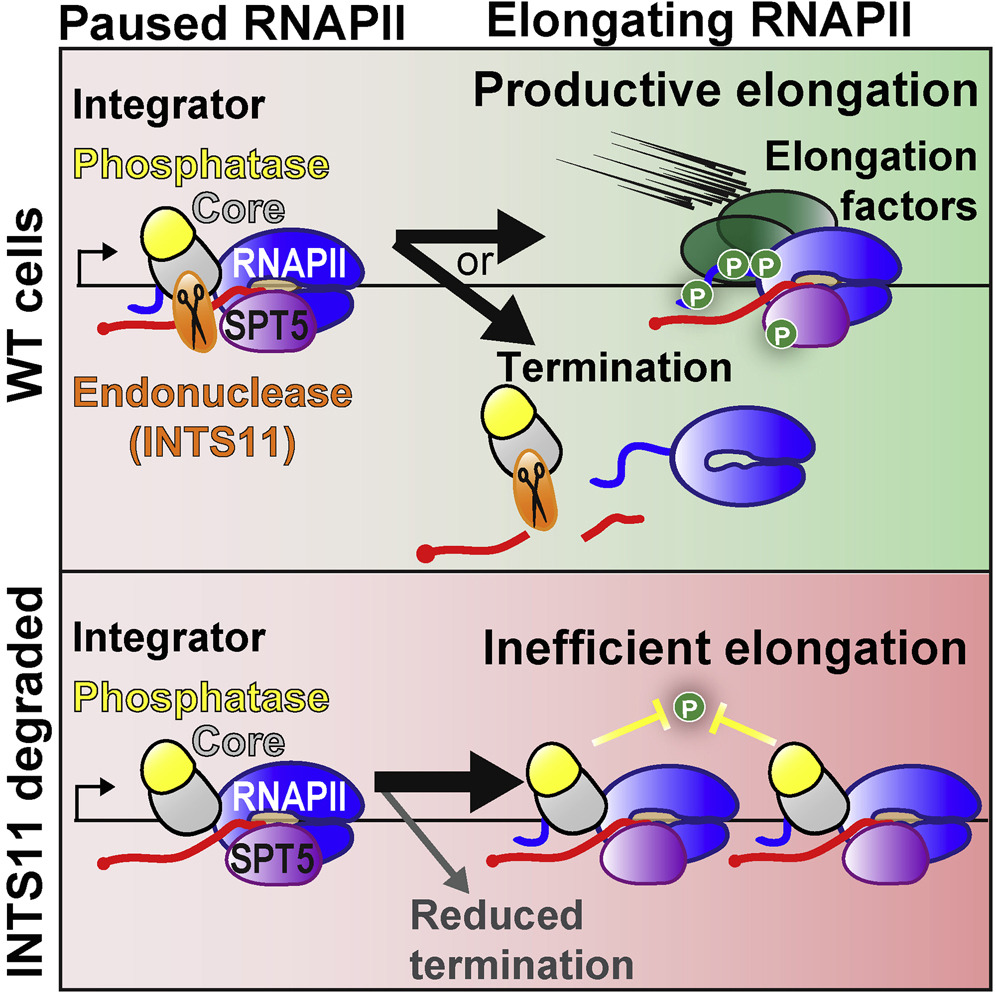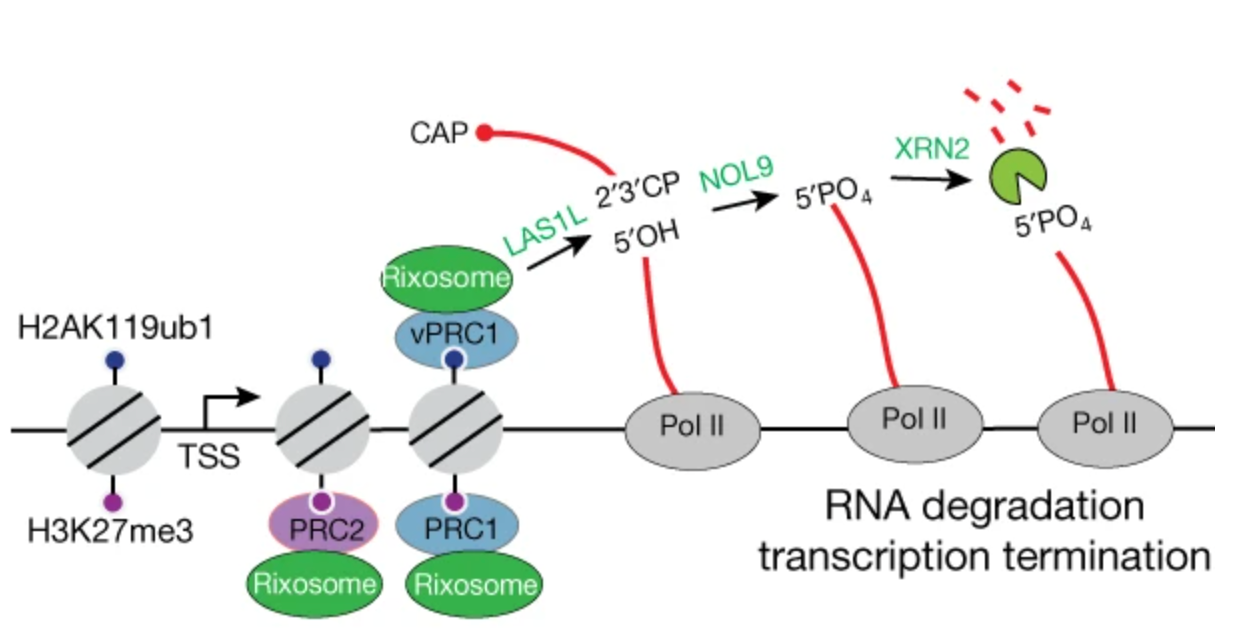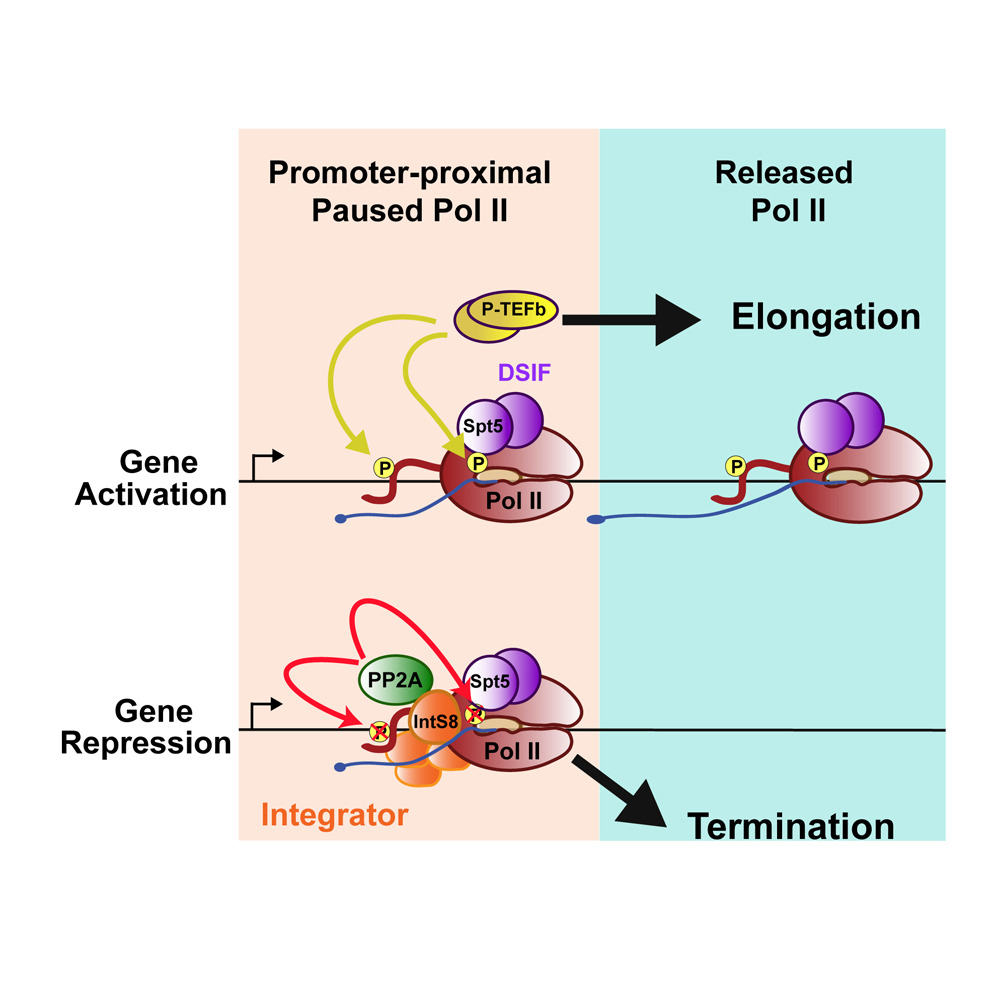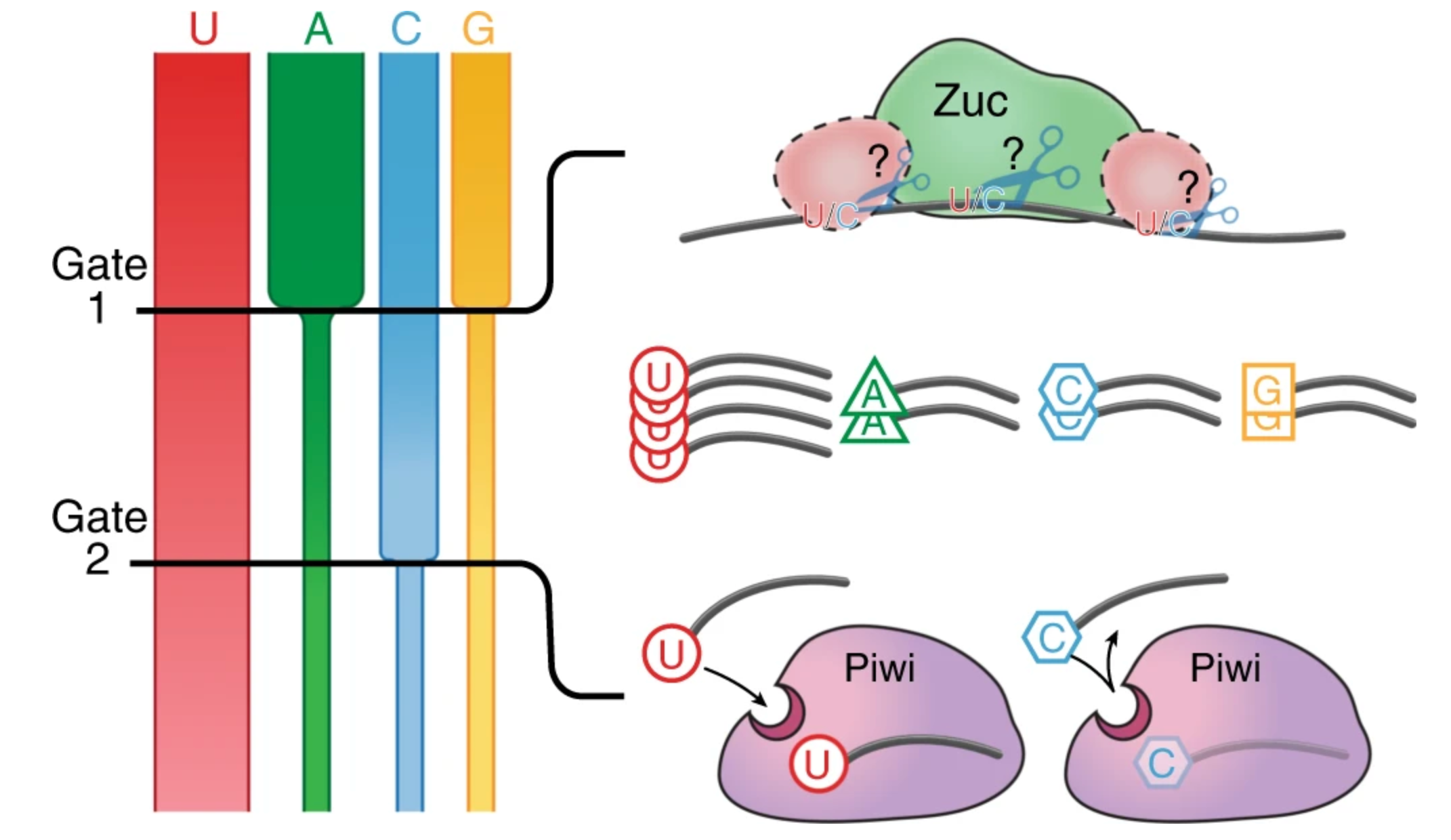publications
publications by categories in reversed chronological order. generated by jekyll-scholar.
2022
-
 Integrator endonuclease drives promoter-proximal termination at all RNA polymerase II-transcribed lociChad B. Stein, Andrew R. Field, Claudia A. Mimoso, and 4 more authorsMolecular Cell, Nov 2022
Integrator endonuclease drives promoter-proximal termination at all RNA polymerase II-transcribed lociChad B. Stein, Andrew R. Field, Claudia A. Mimoso, and 4 more authorsMolecular Cell, Nov 2022RNA polymerase II (RNAPII) pausing in early elongation is critical for gene regulation. Paused RNAPII can be released into productive elongation by the kinase P-TEFb or targeted for premature termination by the Integrator complex. Integrator comprises endonuclease and phosphatase activities, driving termination by cleavage of nascent RNA and removal of stimulatory phosphorylation. We generated a degron system for rapid Integrator endonuclease (INTS11) depletion to probe the direct consequences of Integrator-mediated RNA cleavage. Degradation of INTS11 elicits nearly universal increases in active early elongation complexes. However, these RNAPII complexes fail to achieve optimal elongation rates and exhibit persistent Integrator phosphatase activity. Thus, only short transcripts are significantly upregulated following INTS11 loss, including transcription factors, signaling regulators, and non-coding RNAs. We propose a uniform molecular function for INTS11 across all RNAPII-transcribed loci, with differential effects on particular genes, pathways, or RNA biotypes reflective of transcript lengths rather than specificity of Integrator activity.
-
 Rixosomal RNA degradation contributes to silencing of Polycomb target genesHaining Zhou, Chad B. Stein, Tiasha A. Shafiq, and 8 more authorsNature 2022 604:7904, Mar 2022
Rixosomal RNA degradation contributes to silencing of Polycomb target genesHaining Zhou, Chad B. Stein, Tiasha A. Shafiq, and 8 more authorsNature 2022 604:7904, Mar 2022Polycomb repressive complexes 1 and 2 (PRC1 and PRC2) are histone-modifying and -binding complexes that mediate the formation of facultative heterochromatin and are required for silencing of developmental genes and maintenance of cell fate1–3. Multiple pathways of RNA decay work together to establish and maintain heterochromatin in fission yeast, including a recently identified role for a conserved RNA-degradation complex known as the rixosome or RIX1 complex4–6. Whether RNA degradation also has a role in the stability of mammalian heterochromatin remains unknown. Here we show that the rixosome contributes to silencing of many Polycomb targets in human cells. The rixosome associates with human PRC complexes and is enriched at promoters of Polycomb target genes. Depletion of either the rixosome or Polycomb results in accumulation of paused and elongating RNA polymerase at Polycomb target genes. We identify point mutations in the RING1B subunit of PRC1 that disrupt the interaction between PRC1 and the rixosome and result in diminished silencing, suggesting that direct recruitment of the rixosome to chromatin is required for silencing. Finally, we show that the RNA endonuclease and kinase activities of the rixosome and the downstream XRN2 exoribonuclease, which degrades RNAs with 5′ monophosphate groups generated by the rixosome, are required for silencing. Our findings suggest that rixosomal degradation of nascent RNA is conserved from fission yeast to human, with a primary role in RNA degradation at facultative heterochromatin in human cells. The rixosome associates with Polycomb repressive complexes and chromatin and has a role in silencing of Polycomb target gene expression in human cells via degradation of nascent RNA transcripts.
2020
-
 Integrator Recruits Protein Phosphatase 2A to Prevent Pause Release and Facilitate Transcription TerminationKai-Lieh Huang, David Jee, Chad B. Stein, and 7 more authorsMolecular Cell, Mar 2020
Integrator Recruits Protein Phosphatase 2A to Prevent Pause Release and Facilitate Transcription TerminationKai-Lieh Huang, David Jee, Chad B. Stein, and 7 more authorsMolecular Cell, Mar 2020Efficient release of promoter-proximally paused RNA Pol II into productive elongation is essential for gene expression. Recently, we reported that the Integrator complex can bind paused RNA Pol II and drive premature transcription termination, potently attenuating the activity of target genes. Premature termination requires RNA cleavage by the endonuclease subunit of Integrator, but the roles of other Integrator subunits in gene regulation have yet to be elucidated. Here we report that Integrator subunit 8 (IntS8) is critical for transcription repression and required for association with protein phosphatase 2A (PP2A). We find that Integrator-bound PP2A dephosphorylates the RNA Pol II C-terminal domain and Spt5, preventing the transition to productive elongation. Thus, blocking PP2A association with Integrator stimulates pause release and gene activity. These results reveal a second catalytic function associated with Integrator-mediated transcription termination and indicate that control of productive elongation involves active competition between transcriptional kinases and phosphatases.
2019
-
 Decoding the 5′ nucleotide bias of PIWI-interacting RNAsChad B. Stein, Pavol Genzor, Sanga Mitra, and 8 more authorsNature Communications, Mar 2019
Decoding the 5′ nucleotide bias of PIWI-interacting RNAsChad B. Stein, Pavol Genzor, Sanga Mitra, and 8 more authorsNature Communications, Mar 2019PIWI-interacting RNAs (piRNAs) are at the center of a small RNA-based immune system that defends genomes against the deleterious action of mobile genetic elements (transposons). PiRNAs are highly variable in sequence with extensive targeting potential. Their diversity is restricted by their preference to start with a Uridine (U) at the 5′ most position (1U-bias), a bias that remains poorly understood. Here we uncover that the 1U-bias of Piwi-piRNAs is established by consecutive discrimination against all nucleotides but U, first during piRNA biogenesis and then upon interaction with Piwi’s specificity loop. Sequence preferences during piRNA processing also restrict U across the piRNA body with the potential to directly impact target recognition. Overall, the uncovered signatures could modulate specificity and efficacy of piRNA-mediated transposon restriction, and provide a substrate for purifying selection in the ongoing arms race between genomes and their mobile parasites.